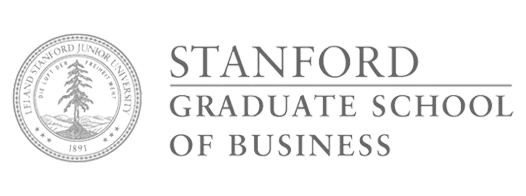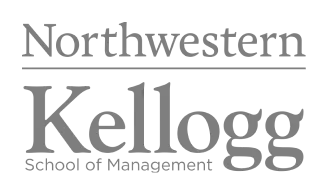How to Prepare for SAT 2025?

We're super excited to connect with you
Book a session with Us For FREE
You can choose to connect with a counsellor or scheudle a free trial class with us ✨🚀
HelpDeskFree Trial ClassThis is the heading
What are the Date's of Digital SAT Test
| SAT Digital Test Date 2024 | SAT Registration Deadline | Deadline for Changes, and Regular Cancellation |
|---|---|---|
| March 9, 2024 | February 23, 2024 | February 27, 2024 |
| May 4, 2024 | April 19, 2024 | April 23, 2024 |
| June 1, 2024 | May 16, 2024 | May 21, 2024 |
- Digital SAT Maths
- Test Breakdown
About this unit
Don’t know much about the digital SAT? Start here! This unit gives you an overview of the structure, format, content, and scoring of the test. You’ll also learn how to take official practice tests and how to create a prep plan through our SAT prep courses.Foundations: Problem solving and data analysis
Foundations: Advanced math
Foundations: Geometry and trigonometry
Medium: Algebra
Medium: Advanced math
Medium: Geometry and trigonometry
Advanced: Algebra
Advanced: Problem solving and data analysis
Advanced: Advanced math
Advanced: Geometry and trigonometry
Digital SAT Test Summary with Detailed Sectional Breakdown:
| Section | Module 1 | Module 2 | Total | Content |
|---|---|---|---|---|
| Reading & Writing | 32 minutes 27 Reading questions 5 Writing questions | 32 minutes 27 Reading questions 5 Writing questions | 64 minutes 54 total Reading questions 10 total Writing questions | Covers various topics like literature, history, social studies, humanities, and science. Tests critical thinking, communication skills, understanding complex vocabulary, analyzing text structure, and crafting effective written communication. |
| Math | 35 minutes 22 Algebra questions 7 Problem-Solving & Data Analysis questions 6 Geometry & Trigonometry questions | 35 minutes 22 Advanced Math questions 7 Problem-Solving & Data Analysis questions 6 Geometry & Trigonometry questions | 70 minutes 35 total Algebra & Advanced Math questions 14 total Problem-Solving & Data Analysis questions 12 total Geometry & Trigonometry questions | Algebra: Covers linear functions, linear inequalities, etc. (similar to Algebra I). Advanced Math: Includes non-linear functions like quadratic and polynomial functions (similar to Algebra II). Tests ability to interpret statistics, draw inferences, understand ratios, rates, and probability. Covers area, volume, triangles, trigonometry, and circles. |
| Total | 67 minutes | 67 minutes | 144 minutes (2 hours 24 minutes) | 98 questions |
Additional Information:
- Score: Each section is scored 200-800, totaling 400-1600.
- Adaptive Scoring: Module 2 difficulty adjusts based on Module 1 performance.
- Navigation: Free movement within modules, but not between.
- Calculator: Approved calculator allowed (optional).
- Preparation: Practice on a computer is essential.
- Resources: See Opus’s website and course mentioned previously.
| Topic | Subtopic | Example |
|---|---|---|
| Info & Ideas | Command of Evidence: Textual | Deriving the equation of a line tangent to a parabola at a specific point |
| Command of Evidence: Quantitative | Representing a system of linear inequalities graphically and finding the feasible region | |
| Central Ideas and Details | Solving a system of non-linear equations using matrices or substitution | |
| Craft & Structure | Inferences | Using the quadratic formula to solve for complex roots |
| Words in Context | Solving exponential equations with logarithms of different bases | |
| Text Structure and Purpose | Analyzing the behavior of a function (increasing/decreasing, intervals of concavity) based on its derivative | |
| Cross-Text Connections | Performing complex number multiplication and division in polar forms | |
| Express Yourself | Transitions | Solving multi-step word problems involving rates, mixtures, and work |
| Rhetorical Synthesis | Analyzing exponential relationships and representing them with appropriate functions | |
| Form, Structure, and Sense | Converting between different measurement systems using dimensional analysis | |
| Boundaries | Fitting a normal distribution curve to a given dataset and calculating probabilities |
| Topic | Subtopic | Example |
|---|---|---|
| Algebra | Linear equations | Deriving the equation of a line tangent to a parabola at a specific point |
| Linear inequalities | Representing a system of linear inequalities graphically and finding the feasible region | |
| Systems of equations | Solving a system of non-linear equations using matrices or substitution | |
| Advanced Math | Quadratic equations | Using the quadratic formula to solve for complex roots |
| Exponential and logarithmic equations | Solving exponential equations with logarithms of different bases | |
| Function analysis | Analyzing the behavior of a function (increasing/decreasing, intervals of concavity) based on its derivative | |
| Complex numbers | Performing complex number multiplication and division in polar forms | |
| Problem-Solving and Data Analysis | Ratios and rates | Solving multi-step word problems involving rates, mixtures, and work |
| Proportional relationships | Analyzing exponential relationships and representing them with appropriate functions | |
| Units and rates | Converting between different measurement systems using dimensional analysis | |
| One-variable data | Fitting a normal distribution curve to a given dataset and calculating probabilities | |
| Two-variable data | Performing multiple linear regression analysis to identify significant factors influencing a dependent variable | |
| Geometry and Trigonometry | Perimeter, area, and volume | Calculating the volume of a truncated cone or frustum |
| Angles and triangles | Proving geometric theorems using congruence and similarity postulates | |
| Trigonometry | Using trigonometric identities and transformations to solve complex angles or equations | |
| Circles | Deriving the equation of a tangent line to a circle from a point outside the circle |

What You Need to Know about SAT Exam Syllabus?
The Opus’s is shaking things up with the SAT, transitioning from paper and pencil to a sleek, digital format. But fear not, future college prospects! This change brings exciting improvements for students and educators alike. Let’s dive into the details:-
| Topic | Subtopic | Example |
|---|---|---|
| Info & Ideas | Command of Evidence: Textual | Deriving the equation of a line tangent to a parabola at a specific point |
| Command of Evidence: Quantitative | Representing a system of linear inequalities graphically and finding the feasible region | |
| Central Ideas and Details | Solving a system of non-linear equations using matrices or substitution | |
| Craft & Structure | Inferences | Using the quadratic formula to solve for complex roots |
| Words in Context | Solving exponential equations with logarithms of different bases | |
| Text Structure and Purpose | Analyzing the behavior of a function (increasing/decreasing, intervals of concavity) based on its derivative | |
| Cross-Text Connections | Performing complex number multiplication and division in polar forms | |
| Express Yourself | Transitions | Solving multi-step word problems involving rates, mixtures, and work |
| Rhetorical Synthesis | Analyzing exponential relationships and representing them with appropriate functions | |
| Form, Structure, and Sense | Converting between different measurement systems using dimensional analysis | |
| Boundaries | Fitting a normal distribution curve to a given dataset and calculating probabilities |
Join OPUS & Go to these Top College!!








FAQs about SAT Exam Preparation
The digital SAT starts in 2024 for students in the US.
Test changes can be overwhelming and confusing, but Kaplan is here to support, encourage, and guide you through this.
Check out this post on our digital SAT page.
With the essay, the SAT lasts 3 hours and 50 minutes. Without the essay, it takes 3 hours. Every SAT test contains the same four sections: Reading, Writing and Language, Math – No Calculator, and Math – Calculator in that order. Some test administrations also include experimental questions, which would extend your total testing time by 20 minutes.
You can take the SAT as many times as you want, but most students take the test 2 or 3 times. We recommend taking the PSAT or a practice test your sophomore year. Plan ahead to take the official SAT in spring or winter of junior year. If you are unhappy with your score, that leaves you time to prep and take it again before application deadlines. Your scores are good for 5 years.
Both the SAT and the ACT are accepted at all major colleges and universities. Therefore, it’s up to you which test you take; you can also choose to take both if you want. Unlike the ACT, the SAT does not have a separate Science section, but it does give a science cross-test score. To find out which is right for you, try a free SAT vs ACT Practice Test.
A perfect score on the SAT is 1600. The minimum score is 400. A good SAT score will depend on your goal and your dream school. A 1060 is about average, though the official average can vary from year to year. Some colleges superscore. This means they combine your highest Math score and your highest Evidence-Based Reading and Writing score from multiple test dates to make a “super” score.
Good news: you don’t have to spend hours memorizing flashcards. Some formulas are provided, and all vocab is tested in context. To prepare for test day, brush up your foundational skills. Make sure you are comfortable with charts and graphs, which are used throughout the test. Not sure where to start? We can provide a plan to prioritize your studying and practice efficient strategies.

